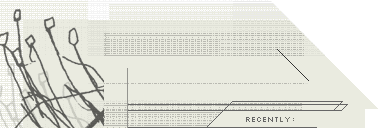Richard Youngs' succession of albums for Jagjaguwar has often seemed
like an ongoing series, one in which the English minimalist explores his
"songwriter mode" with a growing sense of tune and melody. Pose this to
Youngs, and he dismisses it as mere circumstantial evidence, a
perception of his craft that doesn't match the reality. Whilst there's
little doubting that the prettiness of Sapphie or May is miles away from the high-art austerity of his early landmarks like Advent and his
unending collaborations with Simon Wickham-Smith, Youngs has maintained
all along that his entire output comes from the one artistic place. If
this is so, his fifth album for Jagjaguwar, River Through Howling Sky,
finds him returning back closer to this place. Making, most definitely,
his most arty action in this recent succession of albums, the record
finds Youngs drawn back towards the pull of his avant-gardist
droney/minimalist past, leaving his reputation as neo-folkie songsmith
trailing behind him as his songs lose much of the structure consistent
in his recent past. Whilst its form — four songs, 40+ minutes — will
certainly feel familiar, there's little of the reassuring romance that
has been a constant on his Jagjaguwar recordings, this record being unafraid
of difficult distance and unassuming austerities. Built around
twinkling percussion trinkets, amped-up effects-units, and howling
guitar leads, the set sets Youngs' recently-regarded "trademark"
instrument, the 12-string acoustic, deep in the mix, where it serves
simply as a reassuring rhythm, keeping time whilst the intermittent
instruments stir up a cosmic mood out front. For some reason — the spasmodic note-bending guitar-licks, likely — I'm keen to call this disc
Youngs' "blues" record, even in knowing that its blues bleed closer to
blacks, these deep shades of blue/black being desolate spaces of musical
night in which his droning effects and dangling leads linger long, light
littered behind them as they cast their arcs across the sky, the tiny
percussion sounds present (or presented) as twinkling starlight,
celestial bodies cast as distant witnesses. All this seems like a
distinct effort to court atmosphere and eerieness, and such
idiosyncratic atmospherics are sure a long way from the folkie feeling
that painted May in its most pastoral shades.
|

